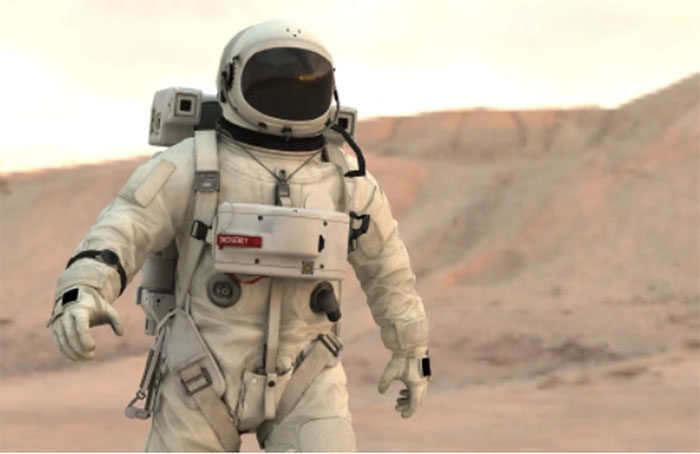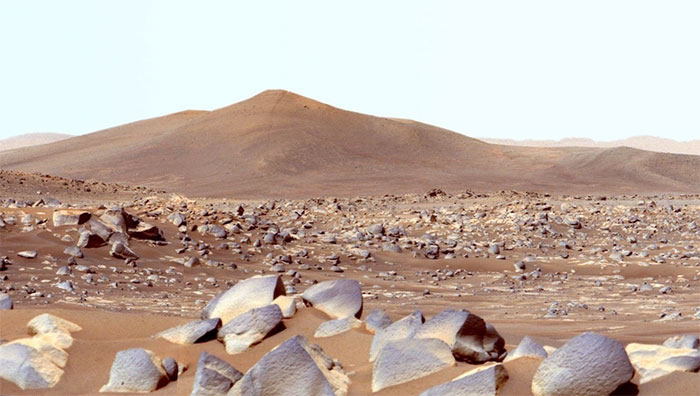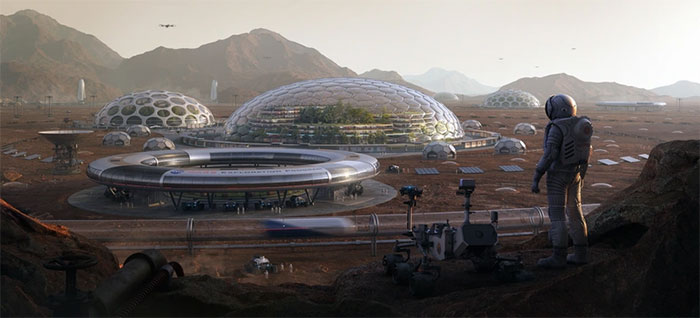Imagine you are an astronaut just landing on the Red Planet; these will be the first challenges you face.
Water, Food, Shelter, and Oxygen
This is a brief list of the four essential elements of life as noted by Phylindia Gant, a Doctor of Geological Sciences at the University of Florida. The first requirement for sustaining life is oxygen.

The first requirement for astronaut survival is oxygen.
The Atmosphere on Mars
“Here on Earth, oxygen is readily available in the air we breathe,” Dr. Gant stated. “Plants and certain types of bacteria provide it for us.”
However, on Mars, the atmosphere is extremely thin, with a volume only 1% that of Earth’s atmosphere, making survival much more challenging. In other words, the air on Mars is 99% less than that on Earth.
This is because Mars is only half the size of Earth, coupled with insufficient gravitational force to retain atmospheric gases from escaping into space.
The most abundant gas remaining on the surface of Mars is carbon dioxide (CO2), which is also highly toxic to humans at elevated concentrations, making up about 96% of the atmosphere.
If you attempt to breathe on the surface of Mars without a spacesuit providing oxygen, you will die instantly from asphyxiation. Even with oxygen supply, the low atmospheric pressure would cause your blood to boil, leading to inevitable death.

The bleak and harsh landscape on Mars captured by a probe. (Photo: NASA).
Harsh Environment
To date, researchers have found no evidence of life on Mars, underscoring how extreme the environment is.
In addition to having very little air, Mars has almost no liquid water on its surface and experiences extremely cold temperatures (at night, temperatures can drop to -73 degrees Celsius).
Nevertheless, the fact that many organisms on Earth thrive in harsh environments leads scientists to believe that life may exist somewhere on Mars. Life has been discovered in Antarctic ice, at the ocean floor, and kilometers beneath the Earth’s surface.
Many of these places have extreme temperatures, very little water, and almost no (or no) oxygen.
This has led scientists to believe that somewhere on Mars, life must exist. Even if life no longer exists on Mars, it may have occurred billions of years ago when the planet had a thicker atmosphere, more oxygen, warmer temperatures, and retained significant amounts of water on its surface.
This is one of the goals of NASA’s Mars exploration mission, which has been ongoing for decades, aimed at searching for signs of life in the form of fossils or microorganisms on the planet.

Scientists believe that somewhere on Mars, life must exist.
Can Humans Live on Mars by Producing Oxygen?
Among the seven instruments on the Perseverance rover is MOXIE, a device capable of separating CO2 from the Martian atmosphere and converting it into oxygen.
If MOXIE operates as scientists hope, future astronauts will not only generate their own oxygen but could also use it as a component in rocket fuel for their return to Earth.
Clearly, the more oxygen humans can produce on Mars, the closer we get to bridging the gap with Earth, making it easier for visitors to undertake a journey there.
However, even under ideal conditions, astronauts will still require specialized spacesuits to ensure pressure balance.
Currently, NASA is urgently researching the new technologies needed to send humans to Mars, and this idea could come to fruition in the next decade, by the late 2030s.
Billionaire Elon Musk, founder of SpaceX, also aims to send around one million people to Mars in the coming decades to establish a city there. Previously, Musk had claimed that 2026 would be the year he believed SpaceX would land the first astronauts on Mars, but many things could go wrong between now and then.


















































